How to Succeed at Underwater Photography
Look through the pages of any adventure magazine like National Geographic, and you’re bound to come across some exciting and epic underwater photography. Now, while yours doesn’t have to be shots of a person inside of a shark cage with a great white shark swimming around him, you can still create very memorable underwater images without going on a thrill-seeker’s vacation.
There’s something about underwater photography that’s truly magical that you can’t get with land pictures. Perhaps it’s the fact that taking shots underwater is still something of a rarity; you’re likelier to bring your DSLR or mirrorless with you out on a stroll and shoot pictures of passersby, for instance.
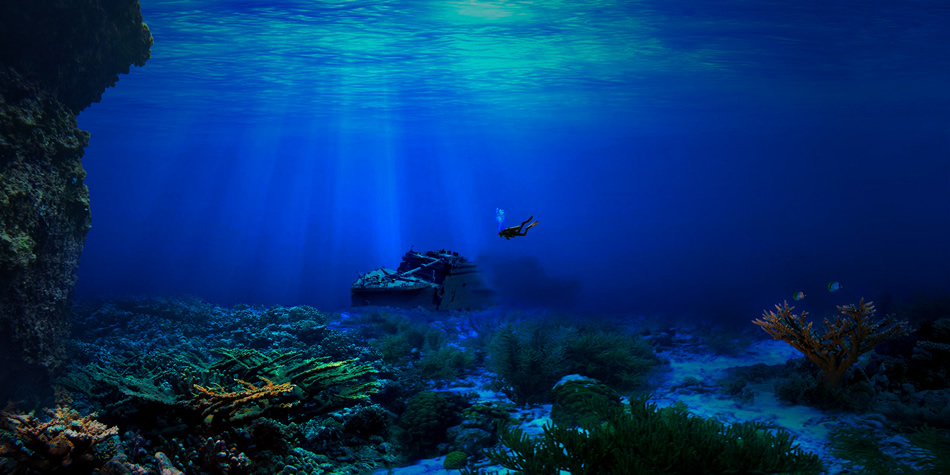
Photo by Rafae|
If you’re ready to take your waterproof camera, or one in a waterproof housing, with you beneath the sea, then here’s what you’ll need to do for awesome shots every time.
Choosing the Right Camera
Underwater photography means that you need to invest in a unique camera with priorities that are different from your regular land-use camera. It pays to get a camera with the following features:
- Get one that has a big, bright LCD resolution, and don’t buy one with a touchscreen unless there are manual controls, too.
- A long battery life is absolutely essential. After all, you can’t just take a break in the middle of the shoot to recharge your battery!
- A camera with a macro mode will work wonders since you’ll want to get tight shots of your underwater subjects.
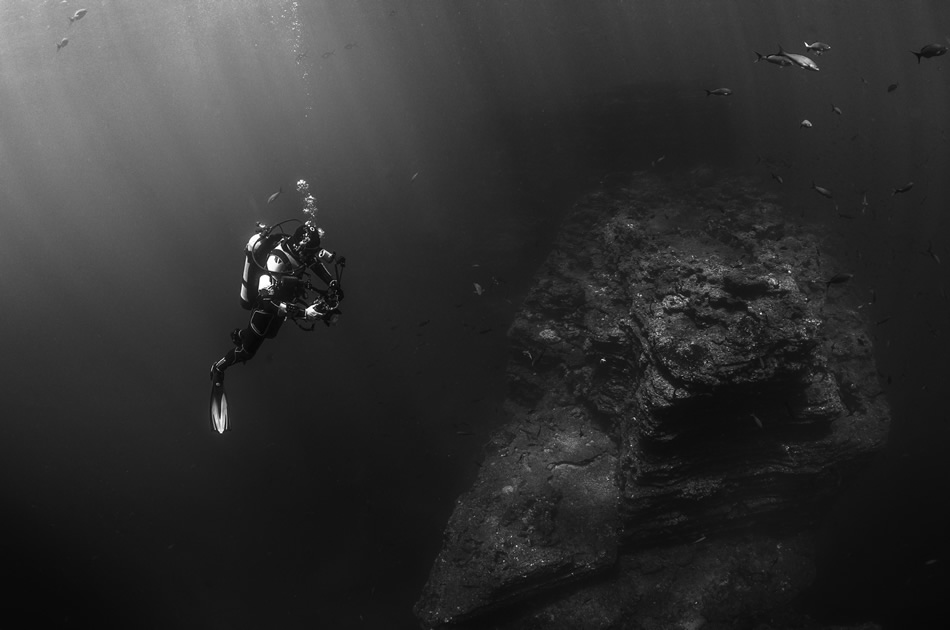
Up Close and Personal Is the Way to Be
Getting as close as you can to your subjects is a best practice. You see, light behaves in a different way underwater as opposed to the surface. The light must go from your camera to the subject and then back to your camera again before it can be recorded.
To deal with this, you could zoom in on the subject as closely as possible, but you’re actually better served to utilize a wide-angle lens. With your wide-angle lens, you can get up as close as you want, provided, of course, that the subject won’t harm you.
Pro tip: Don’t get up close and personal with a shark or other predatory fish or mammal when you’re underwater. This is more common sense than anything else! Also read up on the marine wildlife in the area before you venture out into the ocean, some fish may look sweet but can be quite harmful.
Provided your subject is safe to get up close to – let’s say it’s a beautiful and harmless coral reef! – get in close. When you do, you’ll snap pictures that are cleaner and feature finer detail since the light has less of a distance to travel.
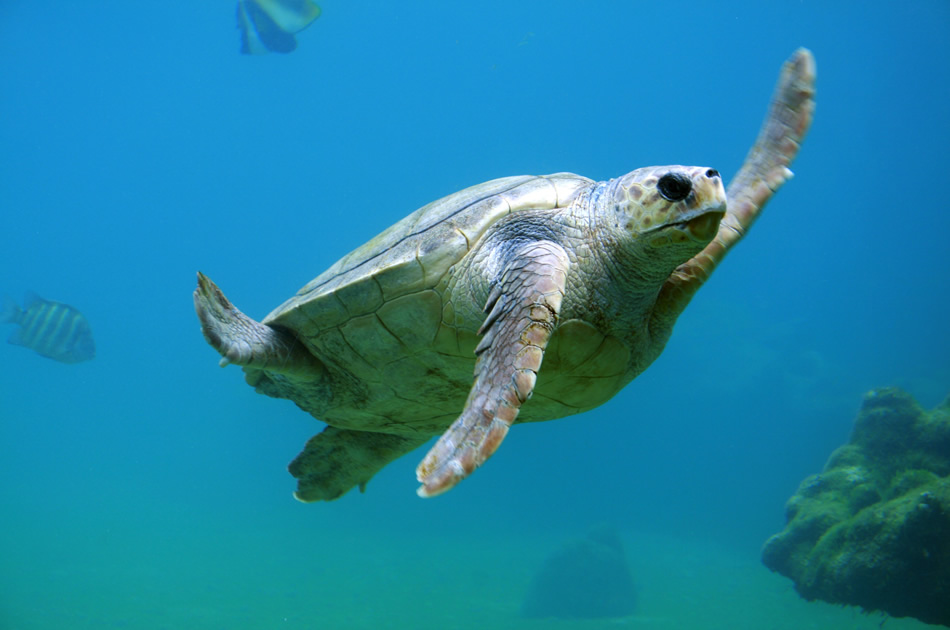
Demonstrate Some Scale
Scale is tremendously vital in many photographs to give the audience all-important clues to the info they’re seeing in the image. Scale provides useful details about the true sizes and proportions of what people are looking at. This is more urgent in underwater images.
Underwater conditions don’t always make it easy for people to tell how big or small something is in your image, so it’s prudent to include an element in the frame that helps explain this.
Say you’re snapping away at a scene of the ocean floor. When you’re shooting just the sandy bottom, it’s difficult for the audience to put that into perspective. However, if you include a school of fish and a nearby diver or snorkeler, then you’ve given your viewers a real, good impression of the expanse of the bottom. Plus, adding more elements into your scene will make it more attractive overall, anyway!
Set the White Balance Correctly
If you’ve taken some underwater photos yourself or know photographers who have, one common complaint you likely have or have heard is the problem with images coming out either red or orange. Why is that? Needless to say, unwanted color in your shots will ruin the entire shoot.
If this happens to you, there’s a good chance that your white balance hasn’t been set properly. Should you happen to use a flash or strobe underwater, be sure to utilize sunny or auto instead of the cloudy white balance position.
Furthermore, if you’re using a flash or strobe, then don’t use underwater mode.
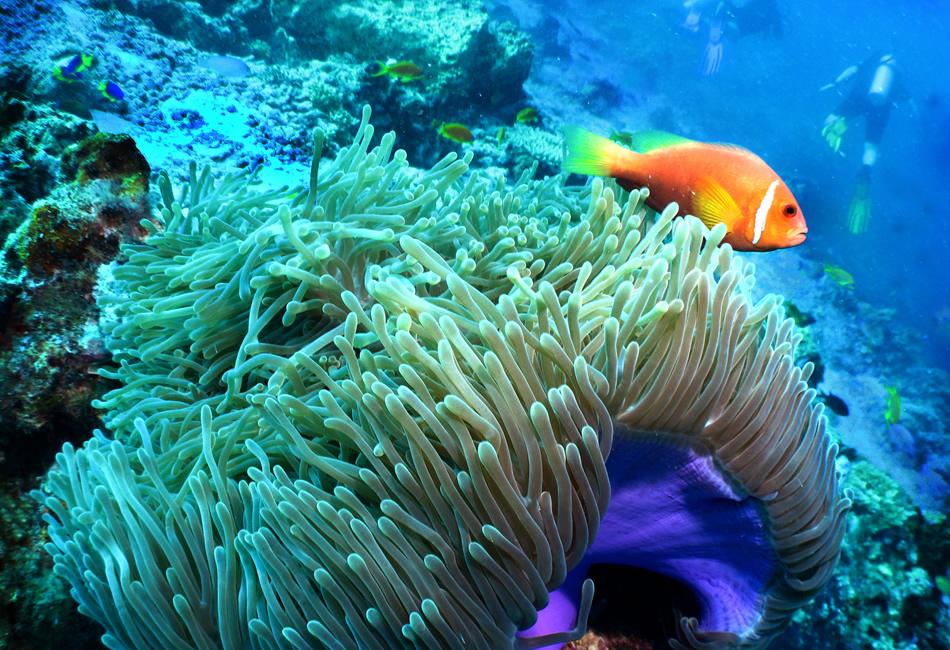
Photo by Neville Wootton
What to Know About Focusing & Metering
Here’s a rule of thumb for your underwater excursions: Whenever there’s adequate contrast, your autofocus should still be effective. Try your center focus or spot focus settings, both of which ought to work well underwater. Should it become necessary, know that you always have the option of attaching a compact dive light right to your camera’s housing as a type of modeling light. This will help with autofocus.
At the same time, don’t rely too much on autofocus. It’s a best practice to avoid using it for prolonged periods of time. Autofocus, especially underwater, is easily fooled by the environment and will suck the life out of your battery quicker than normal, which isn’t what you want down there.
If your camera has a manual focus option, don’t shy away from it. Learn to use it because there are opportunities for it to come in handy. Here’s what you need to remember when using manual focus: things will look closer to you underwater than on land. This is highly important when you’re eyeballing distance for your manual focus.
As for metering, center-weighted and spot are your best bets, much like with autofocus. Finally, give your audience a lot to look at, so ensure that you’re always filling up the entire frame as much as you can with your shots.
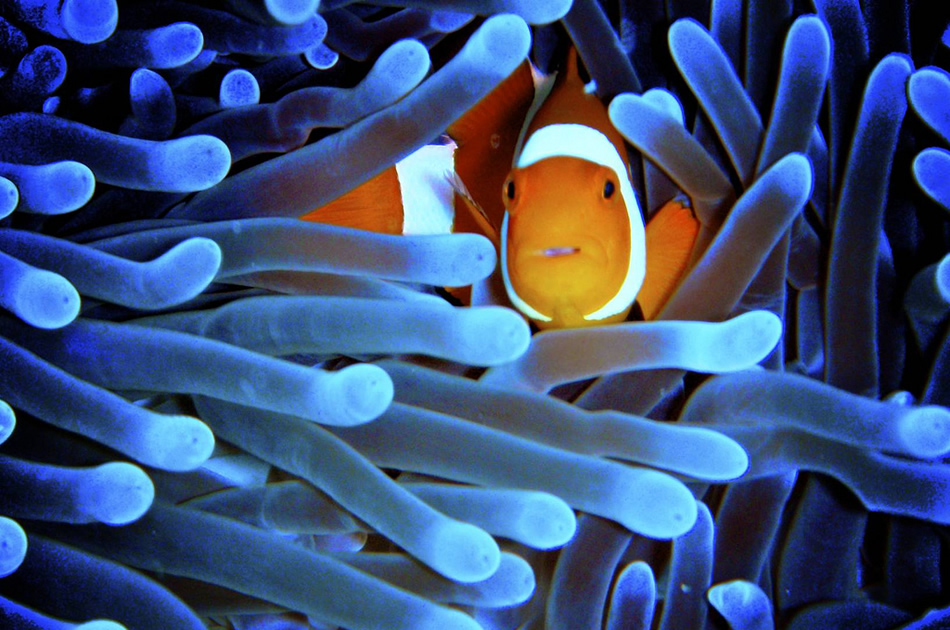
Photo by Joshua Nguyen
A Stimulating Challenge
For photographers who haven’t ventured away from the land before, underwater photography can seem confusing and maybe a bit daunting. There’s only one way to get over these jitters: Throw yourself into it. The best way to do anything is to simply learn your hand at it, and that’s the approach you should take with underwater photography.
With the right preparations, equipment and techniques, you’ll eventually build up your experience level and, therefore, confidence!
So put that camera into housing, choose your dive location, and put this advice into practice. Your awesome underwater shots are waiting for you.
